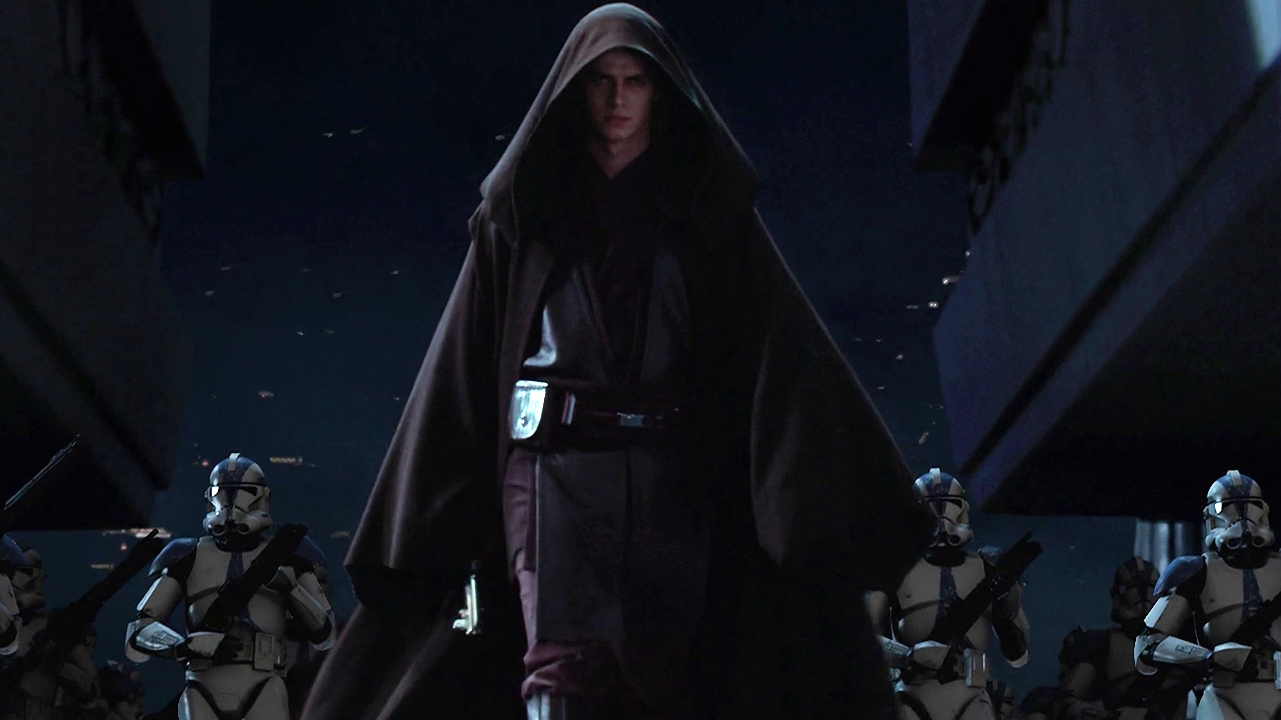All The Ways The Jedi Should Have Known About Order 66
The ending of the prequel era indisputably comprised the saddest tragedies in Star Wars: the reveal of Chancellor Palpatine as the Sith puppet master behind the galaxy-wide conflict, the fall of the Chosen One to the dark side, the execution of Order 66 by the loyal and formidable clone army on their Jedi generals, and the virtual collapse of the entire Jedi Order. However, from a bystander's perspective beyond the fourth wall, it is somewhat baffling how the Jedi was completely blinded of the sinister plot. We look at the movies, Star Wars: The Clone Wars animated series and Legends materials to identify why (and how) the Jedi should have known about Order 66, the destructive means of fulfilling Darth Sidious' devious master plan.
How The Clone Army Manifested Itself In The First Place
Star Wars: Episode II - Attack of the Clones told us that Jedi Master Sifo-Dyas was supposedly the initiator (in secrecy) of the clones for creating a Grand Army of the Republic in response to galactic-wide threats to peace. While in reality, Sifo-Dyas was manipulated by Palpatine and Count Dooku, and then killed by the latter before the clones' official commission. The Jedi did investigate into Sifo-Dyas' death (partly revealed in The Clone Wars series), and came to the worrying discovery of Dooku's involvement in the army's creation. However, this was never revealed to the public for fear of public backlash against the clone army.
In Attack of the Clones, Obi-Wan also discovered that the Jedi were fully aware that the genetic template for the clones came from the notorious bounty hunter Jango Fett. Knowing that Fett was hired to assassinate Padme Amidala on Coruscant, and that he was a clear associate and ally of Count Dooku, there was clearly sufficient evidence to raise reasonable suspicion as to any nefarious dealings embedded in the clone project. Another relevant concern is that Jango Fett seemed to be a Mandalorian, a people with deep historical roots of anti-Jedi sentiment dating back to the Old Republic. Unfortunately, the Jedi turned a blind eye on such salient issues.
Worrying Cases Pointing Towards A Much Larger Issue
Even though Order 66 was not a part of the clones’ training or programming disclosed to the Jedi, the mysterious existence and explanation for the inhibitor chip should have raised suspicion. The issue on the chip was particularly highlighted before the Jedi in two key instances illustrated in The Clone Wars.
The first instance concerned a premature triggering of the Order 66 programming in a single clone trooper. In season 6 episode 1 of the animated series, clone trooper Tup of the elite 501st legion shockingly shot and killed Jedi Master Tiplar during the Battle for Ringo Vinda before snapping back into reality as if out of a trance. This was a horrifying, unprecedented incident that must have caught the Jedi's attention, despite Palpatine's later efforts to cover up the truth.
As a continuation of the incident, the second key instance came when ARC trooper Fives took his own initiative to investigate the "inhibitor chip malfunction" incident and came close to discovering the whole sinister plot against the Jedi. By removing his own chip and secretly analyzing it along with Tup's (who later died) on Kamino, Fives desperately explained his findings to Jedi Master Shaak Ti while Nala Se, the Kaminoan scientist, protested and denied the allegations. Fives later secured a meeting with Palpatine, but was later manipulated by the latter into an alleged assassination attempt. The truth of the inhibitor chip died with him. Even after Captain Rex filed a grievance report, hoping to bring the mysterious findings before the Jedi, rather than investigating the clones' reports further, the Jedi ultimately gave into the game of politics and missed out on a crucial opportunity and evidence that could have saved the Republic.
"The missions... the nightmares... they're finally ... over." - ARC Trooper Fives
The Jedi's Arrogance And Poor Judgment
While the eventual truth may be hard to believe at first, the Jedi Order (especially the Jedi Council) had always been arrogant and held themselves as somewhat superior in the final years of the Republic. An ironic example was when Dooku practically revealed the Sith's influence over the Republic as a massive hint of Darth Sidious' plot, but Obi-Wan was steadfast in rejecting it, and claiming that the Jedi would for sure have sensed it. A similar attitude in resolving issues, particularly politically-sensitive ones, was seen in the Council succumbing to political pressure, and expelling Ahsoka Tano as a scapegoat rather than trusting her words during the Jedi Temple bombing aftermath.
The Jedi were also somewhat foolish in rushing into war (or "peacekeeping") with the clones without actually examining the clone program in-depth. Being basically a large-scale project that sprung from Kamino out of nowhere, the Jedi had every reason to at least understand more about the details and nuances of the clone program. It was likely due to the circumstantial urgency, coupled with the Jedi's misplaced faith, that led to such rash and poor judgment.
In Legends, Order 66 was not introduced as an undisclosed directive, but one of the 150 contingency orders well-known to the Republic military and the Jedi. Given their drastic nature, as seen in Order 37 (mass arrest and threatened execution of civilians to capture wanted individuals), it would essentially amount to the Jedi's responsibility to examine the contingency orders. Their failure to do so became the final nail in the coffin leading to the fall of the Republic.
Source: Screen Rant







